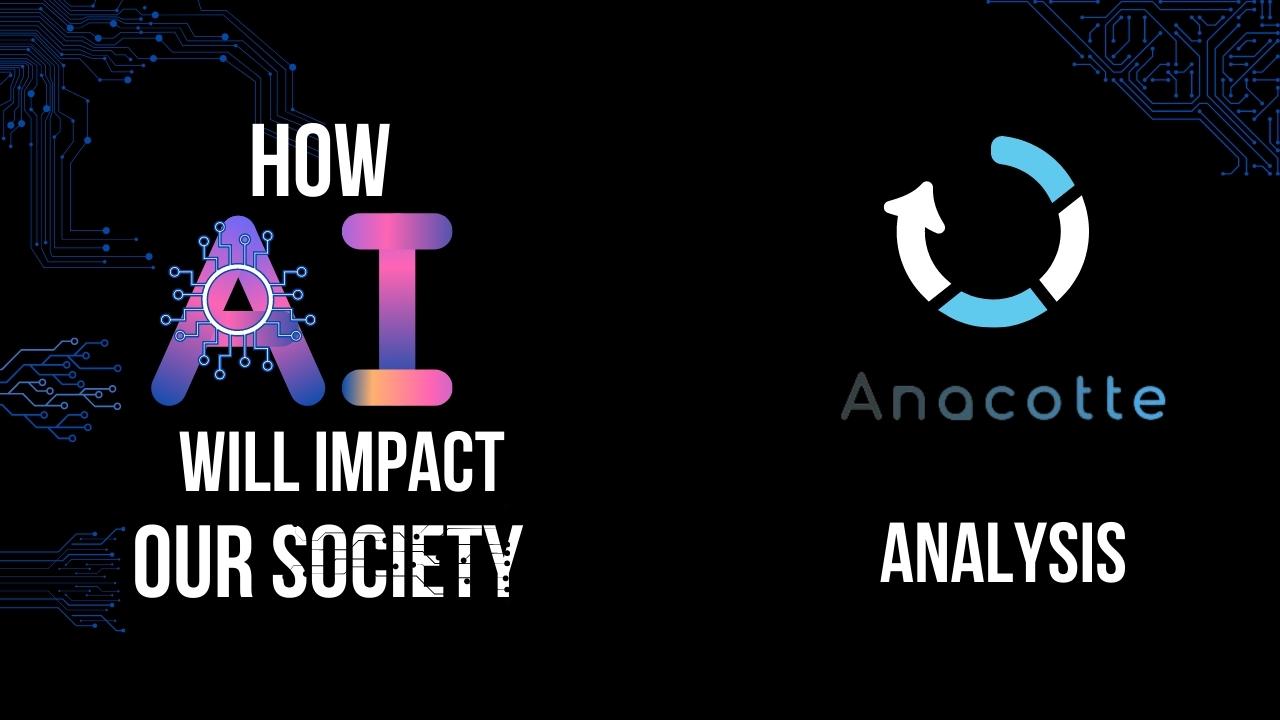Artificial intelligence (AI) has undergone a remarkable transformation in recent years, evolving from a futuristic concept primarily seen in science fiction to an integral component of our daily lives. As AI becomes increasingly ubiquitous, it is essential to understand its origins, the diverse applications it currently serves, and the potential implications it has for our future.
The Rise of AI: From Concept to Reality
AI’s conceptual roots can be traced back to the mid-20th century, with the birth of the computer age. Initially, AI development was a slow and gradual process, as researchers and scientists sought to create machines capable of replicating human intelligence. Over time, the field experienced several “AI winters,” during which research funding and interest waned due to a lack of tangible progress.
However, the past two decades have witnessed an extraordinary surge in AI development, driven primarily by three key factors: the exponential increase in computing power, the widespread availability of large datasets, and significant breakthroughs in machine learning algorithms. This convergence of factors has propelled AI from a niche field to a mainstream technology, with profound implications for individuals, industries, and the global community.
AI in Everyday Life: Current Applications
AI’s integration into our daily lives is evident in numerous applications, some of which are outlined below:
AI in Healthcare:
- Mental Health: AI-powered chatbots and virtual therapists can provide personalized, accessible support to individuals struggling with mental health issues. By analyzing speech patterns, facial expressions, and written text, these AI systems can offer therapeutic interventions and guidance.
- Epidemic Tracking and Prediction: AI can analyze vast amounts of data from diverse sources to track and predict the spread of infectious diseases, helping public health authorities take proactive measures to contain outbreaks and allocate resources effectively.
- Medical Research: AI can accelerate the pace of medical research by analyzing vast amounts of scientific literature, identifying relevant patterns and connections, and suggesting new hypotheses to test, thus speeding up the development of novel treatments and therapies.
AI and the Environment:
- Climate Modeling: AI can improve climate modeling by analyzing complex and vast datasets, enabling more accurate predictions of climate change impacts and helping inform mitigation and adaptation strategies.
- Conservation: AI-powered systems can monitor and analyze data from satellite imagery, drones, and IoT sensors to detect illegal activities, such as poaching and deforestation, and help protect endangered species and ecosystems.
- Sustainable Agriculture: AI can optimize crop yields, irrigation, and fertilizer use by analyzing data on soil conditions, weather patterns, and plant health, ultimately contributing to more sustainable and efficient agricultural practices.
AI Ethics and Regulations:
- Algorithmic Transparency: Ensuring that AI systems are transparent and understandable is crucial for building trust and accountability. Policymakers and technology companies must work together to develop guidelines and best practices that promote explainable AI, allowing users to understand how decisions are made and ensuring that AI systems align with human values.
- Inclusive AI: Ensuring that AI systems are designed with diversity and inclusivity in mind is essential to avoid perpetuating biases and discrimination. Developers must prioritize the collection of diverse and representative training data, as well as involving diverse teams in the design, development, and evaluation of AI systems.
- Legal and Ethical Frameworks: As AI systems become more autonomous and capable, questions surrounding legal responsibility and ethical decision-making become increasingly important. Policymakers, ethicists, and technologists must collaborate to establish legal and ethical frameworks that address the unique challenges posed by AI, such as liability in cases of accidents involving autonomous vehicles or the use of AI in life-critical decisions.
AI and Economic Development:
- Job Creation and Transformation: While AI has the potential to automate certain tasks and jobs, it can also create new job opportunities in fields like data analysis, AI engineering, and cybersecurity. Moreover, AI can enhance human productivity by automating repetitive tasks, enabling workers to focus on more complex and creative aspects of their jobs.
- Economic Growth: AI-driven innovations can boost economic growth by increasing productivity, optimizing resource allocation, and fostering the development of new products and services. As AI technologies become more accessible and affordable, businesses across various sectors can harness their potential to drive growth and competitiveness.
- Digital Divide: The unequal distribution of AI technologies and skills may exacerbate existing economic disparities between countries and communities. Policymakers and international organizations must prioritize digital inclusion and capacity building to ensure that the benefits of AI are distributed equitably and that vulnerable populations are not left behind.
AI in Public Services and Governance:
- Smart Cities: AI can play a crucial role in developing smart cities by optimizing urban infrastructure, improving public services, and enhancing overall quality of life. Applications include AI-powered traffic management systems, intelligent energy grids, and predictive maintenance of public facilities.
- Public Safety: AI systems can enhance public safety by analyzing data from surveillance cameras, social media, and IoT sensors to detect potential threats, such as crime or natural disasters, and enable timely response by law enforcement and emergency services.
- Policy and Decision-Making: AI-driven data analysis and predictive modeling can help policymakers make more informed decisions, enabling them to anticipate and address complex social, economic, and environmental challenges.
AI and the Arts:
- Creative AI: AI systems can generate novel artistic content, such as music, visual art, and literature, by analyzing existing works and generating new patterns and styles. These creative AI applications can inspire human artists, foster collaboration between humans and machines, and challenge traditional notions of creativity and authorship.
- Entertainment Industry: AI-driven algorithms can personalize content recommendations for users, enabling streaming platforms to better engage audiences and tailor content to individual preferences. In film and video production, AI technologies can assist with tasks like script analysis, visual effects, and even virtual acting, transforming the way content is created and consumed.
AI and Scientific Research:
- Accelerating Discoveries: AI can analyze vast amounts of scientific literature, process complex datasets, and identify patterns and connections that would be difficult for humans to discern. By doing so, AI can accelerate the pace of scientific discoveries and help researchers identify new avenues for exploration and experimentation.
- Collaborative Research: AI-driven platforms can enable global collaboration among researchers by facilitating the sharing of data, resources, and ideas. This can help overcome geographical and institutional barriers, ultimately fostering innovation and driving progress in various scientific fields.
- Citizen Science: AI can empower citizen scientists by providing them with tools to collect, analyze, and interpret data, thereby democratizing access to scientific research and enabling broader participation in the pursuit of knowledge.
AI in Sports and Fitness:
- Performance Analysis: AI can analyze data from wearable devices, video recordings, and other sources to provide insights into athletes' performance, identifying areas for improvement and personalizing training regimens.
- Injury Prevention: AI-driven analysis of biomechanics and movement patterns can help identify potential risk factors for injuries, enabling athletes and coaches to take preventive measures and optimize training protocols.
- Fan Engagement: AI-powered sports analytics can enhance fan experiences by offering personalized content, real-time statistics, and advanced game simulations, fostering deeper connections between fans and their favorite sports and teams.
AI and Mental Health:
- Digital Mental Health Interventions: AI-powered platforms can offer personalized and accessible mental health support through chatbots, virtual therapists, and online self-help programs. These digital interventions can complement traditional mental health services, helping to bridge gaps in access to care and support.
- Emotion Recognition: AI systems can analyze facial expressions, speech patterns, and other cues to recognize and interpret human emotions. This technology can be used to develop new tools for mental health assessment and intervention, as well as to enhance human-computer interaction.
- Mental Health Research: AI can facilitate the analysis of large-scale mental health data, such as electronic health records and social media posts, to identify patterns, trends, and risk factors for mental health conditions. This can help inform the development of new treatments, public health initiatives, and preventive strategies.
AI and Disaster Management:
- Early Warning Systems: AI can analyze vast amounts of data from various sources, such as satellite imagery, weather patterns, and geological sensors, to predict and monitor natural disasters like earthquakes, hurricanes, and floods. Early warning systems powered by AI can help save lives and minimize damage by providing timely alerts and facilitating evacuation and emergency response efforts.
- Disaster Response: AI-driven drones and robots can assist in disaster response efforts by surveying affected areas, locating survivors, and delivering essential supplies, particularly in situations where human intervention may be too dangerous or challenging.
- Post-Disaster Recovery: AI can support post-disaster recovery efforts by assessing damage, prioritizing resources, and optimizing the allocation of aid and reconstruction efforts. This can help communities rebuild more efficiently and resiliently in the aftermath of a disaster.
AI and the Future of Work:
- Remote Work and Collaboration: AI-powered tools and platforms can facilitate remote work and collaboration, enabling teams to stay connected and productive regardless of their physical location. This can lead to increased flexibility, reduced commuting, and a better work-life balance for employees.
- Lifelong Learning and Skill Development: AI-driven educational platforms and tools can support continuous learning and skill development throughout a person's career, helping workers adapt to the changing demands of the labor market and remain competitive in the age of automation.
- Talent Acquisition and Retention: AI can streamline the recruitment process by analyzing candidate data to identify the best matches for job openings, reducing bias in hiring decisions, and improving overall talent acquisition and retention strategies.
AI and Social Impact:
- Tackling Social Issues: AI can be harnessed to address pressing social issues, such as poverty, inequality, and human rights abuses. By analyzing data on socioeconomic indicators, human rights violations, and other relevant factors, AI can help policymakers and non-profit organizations identify problem areas, design targeted interventions, and monitor progress toward their goals.
- Enhancing Accessibility: AI technologies, such as speech recognition, natural language processing, and computer vision, can improve accessibility for individuals with disabilities. For example, AI-driven tools can convert spoken language to text, describe visual content to the visually impaired, or recognize sign language for the hearing impaired.
- Promoting Social Connection: AI-powered social platforms and applications can facilitate connections and communication among individuals, helping to reduce isolation and foster a sense of community. This can be particularly beneficial for marginalized populations, such as seniors, people with disabilities, and individuals living in remote areas.
The ongoing advancement of AI has the potential to profoundly reshape numerous aspects of society, offering both opportunities and challenges. By considering the various consequences of AI's development and proactively addressing concerns related to ethics, inclusivity, and regulation, we can harness the power of AI to create a more equitable, efficient, and sustainable future. As AI continues to evolve, it is essential that we remain vigilant, adaptive, and collaborative, ensuring that AI serves the best interests of humanity and contributes to the betterment of our world. Read more articles from Anacotte here.






Hinterlasse einen Kommentar
Diese Website ist durch hCaptcha geschützt und es gelten die allgemeinen Geschäftsbedingungen und Datenschutzbestimmungen von hCaptcha.